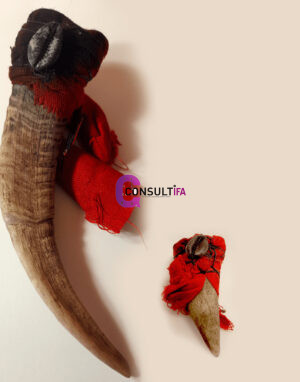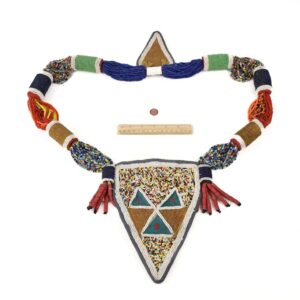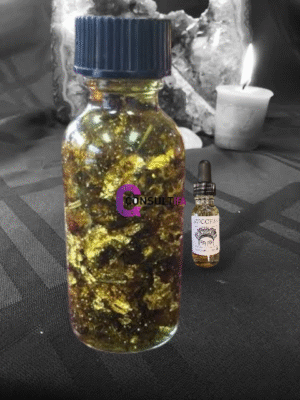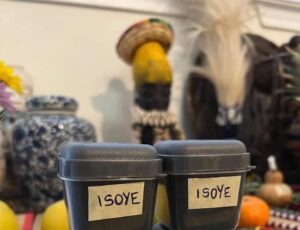When Portuguese explorers first encountered Yoruba healers within the 15th century, they had been astounded by the subtle medicinal records that had already been developed over thousands of years. The Yoruba extinct pills machine represents one amongst humanity’s oldest documented therapeutic traditions, with tactics and records that continue to impact healthcare practices globally this day.
The historical past of Yoruba natural pills is inseparable from the cultural and non secular practices of the Yoruba folks. It’s a dwelling tradition. Files handed thru generations. Its rules are more and more validated by standard science, growing a consuming bridge between feeble wisdom and contemporary healthcare.
Used Origins and Non secular Foundations (Pre-16th Century)
I’ve continually been smitten by how the Yoruba folks viewed pills as one thing far past right bodily therapeutic. When I first started finding out extinct Yoruba herbalism years within the past, We was struck by how every plant had no longer right bodily properties but non secular significance too. It wasn’t tackle standard pills the least bit—it was a total worldview.
At the guts of Yoruba natural traditions stands Osanyin, the orisha (deity) of herbs and pills. I preserve in mind visiting a extinct shrine in Nigeria the build the emblem of Osanyin—a steel group of workers with birds—stood proudly among the many medicinal vegetation. The locals explained that Osanyin wasn’t right a image but a dwelling force that guided healers of their work. This non secular connection is why extinct Yoruba pills can never be diminished to right a listing of vegetation and their effects.
The Yoruba cosmos is organized into visible and invisible nation-states, and this worldview straight shapes how vegetation are classified. Crops aren’t right categorized by their bodily properties but by their non secular attributes too. Some vegetation are regarded as as “sizzling,” others “frigid,” some linked to particular orishas, and others to ancestral spirits. This classification machine helped healers match cures no longer right to bodily indicators but to the general particular person and their non secular command.
Before written records, records about medicinal vegetation was preserved thru an present an explanation for oral tradition. Babalawo (monks of Ifa divination) and herbalists maintained this records thru apprenticeship programs that in most cases lasted decades. I as soon as spoke with an elder herbalist who educated me he spent 15 years finding out from his grandfather before he was regarded as as ready to prepare independently. That level of dedication ensured records wasn’t lost.
Archaeological findings in feeble Yoruba settlements have revealed grinding stones, pottery, and other instruments with plant residues courting support centuries. These discoveries present tangible evidence of subtle plant processing tactics that existed lengthy before European contact. Scientists have discovered traces of vegetation nonetheless weak this day in extinct cures, showing the excellent continuity of this records.
In extinct Yoruba pills, there’s finally no separation between bodily and non secular therapeutic. A successfully being self-discipline might per chance very successfully be handled with herbs, but ritual purification, divination, and non secular interventions had been equally valuable. This holistic formula formula that belief the historical past of Yoruba natural pills requires belief Yoruba spirituality as successfully. The 2 are tackle twins that can’t be separated.
About a of the ideal medicinal vegetation documented in early Yoruba historical past comprise:
- Bitter leaf (Ewuro), weak for digestive complaints and fever
- Aloe vera (Eti erin), applied for skin stipulations and wounds
- Bitter kola (Orogbo), prized for its utilize in treating infections
- African basil (Efinrin), utilized for respiratory stipulations
- Bush tea (Efo yanrin), employed for current wellness and non secular cleansing
I’ve tried making ready bitter leaf the extinct device—pounding it in a mortar and extracting the juice—and let me repeat you, it’s device more challenging than it looks! The extinct healers developed tactics over centuries that take right capacity to grasp. It’s no shock this records was so in moderation guarded and handed down.
Colonial Encounters and Documentation Length (16th-19th Centuries)
The appearance of European explorers in Yorubaland marked a turning level for extinct pills. I preserve in mind coming across a 16th-century Portuguese journal at a college library that described Yoruba therapeutic practices with a aggregate of fascination and dismissal. Studying between the traces, though, you will repeat the Europeans had been impressed no subject themselves!
When Portuguese ships first made contact with West African coastal communities within the 15th century, they encountered Yoruba therapeutic traditions already in beefy flower. These early interactions ended in the indispensable written records of Yoruba clinical practices by outsiders. European accounts in most cases described the healers as “witch doctors”—fully lacking the level of their subtle records machine. But these records, biased as they had been, nonetheless present precious historical evidence of practices that had been successfully-established centuries within the past.
In truth one of a actually powerful—and tragic—positive aspects of this period was how the transatlantic slave change spread Yoruba clinical records across the Atlantic. Enslaved Yoruba folks brought their therapeutic traditions to the Americas and Caribbean, the build these practices took root in unique kinds. In Brazil, Cuba, Haiti, and aspects of the southern United States, aspects of Yoruba natural pills had been preserved and adapted, in most cases in secret. The medicinal vegetation that couldn’t be brought from Africa had been substituted with botanically identical species discovered within the unique environments.
I visited a extinct healer in Cuba as soon as who showed me her altar devoted to Osanyin. The herbs organized around it included each and each vegetation native to Cuba and others that had been brought from Africa centuries within the past. She educated me how her ancestors had kept these traditions alive even as soon as they had been forbidden by slave householders and colonial authorities. It was a robust reminder of how resilience and adaptation preserved this records thru unbelievable hardship.
Colonial authorities actively tried to suppress extinct Yoruba therapeutic practices. They viewed extinct pills as ragged superstition that wanted to secure modified by European approaches. Colonial laws in many areas prohibited extinct therapeutic ceremonies and restricted the prepare of indigenous pills. These efforts had been phase of a broader are trying and erase indigenous records programs and impose European cultural dominance. Despite these pressures, Yoruba therapeutic traditions went underground as an alternative of disappearing.
Despite colonial opposition, some European missionaries, merchants, and early anthropologists grew to turn out to be drawn to documenting Yoruba natural cures. Books tackle William Bosman’s “A New and Exact Description of the Hover of Guinea” (1705) and Hugh Clapperton’s “Journal of a 2nd Expedition into the Internal of Africa” (1829) contained a few of the earliest written records of Yoruba medicinal practices. These texts, while in most cases inaccurate and filtered thru European biases, preserved recordsdata that might per chance presumably otherwise had been lost.
All the device thru this period, syncretic therapeutic traditions emerged that blended Yoruba clinical records with other influences. In Cuba, Santería developed as a fusion of Yoruba traditions with Catholicism and indigenous Caribbean aspects. In Brazil, Candomblé preserved many positive aspects of Yoruba natural pills. These traditions grew to turn out to be valuable automobiles for preserving Yoruba medicinal records at some stage in a time when insist prepare was in most cases suppressed. I’ve viewed how these traditions continue this day, with practitioners nonetheless the utilize of herbs in ways recognizably linked to their Yoruba roots.
The colonial length was this type of mixed in finding for Yoruba pills. On one hand, it faced inconceivable stress and persecution. On the opposite, it demonstrated excellent resilience and suppleness. Practitioners discovered ways to support core records while adapting to unique cases and even incorporating advantageous aspects from other traditions. This adaptability might per chance presumably be why Yoruba pills continues to thrive this day when many other extinct programs have aged away.
Early Scientific Investigation Length (1800s-1950s)
The 19th century brought a novel phase within the narrative of Yoruba natural pills—the beginning of scientific passion. I’ve continually discovered it kinda ironic that Western science, which had pushed apart extinct pills as superstition, all straight away started getting alive to as soon as they realized these vegetation might per chance have precious compounds! But their passion, however self-serving, did support doc and support records that might per chance presumably otherwise had been lost.
The Victorian period saw the upward thrust of botany and pharmacognosy (the witness of medicinal substances from pure sources) as scientific disciplines. European researchers started gathering, classifying, and finding out vegetation weak in Yoruba pills. Expeditions to Yorubaland returned with plant specimens that had been cultivated in European botanical gardens and studied in laboratories. The level of interest was totally on identifying active compounds that might per chance presumably very successfully be isolated, as an alternative of belief the holistic therapeutic programs from which these vegetation came.
Loads of valuable texts emerged at some stage in this period that documented Yoruba medicinal vegetation. Works tackle “The Precious Crops of West Tropical Africa” by J.M. Dalziel (first printed in 1937) cataloged a total bunch of vegetation weak in extinct pills at some stage in West Africa, at the side of many from Yoruba traditions. These texts grew to turn out to be valuable references that preserved records of plant uses at a time when extinct prepare was nonetheless being downhearted.
I as soon as spent a total summer digging thru archives wanting at these weak botanical texts. The detailed illustrations had been fabulous, but what struck me most was how the European scientists in most cases claimed to “witness” vegetation that native healers had been the utilize of for centuries! The erasure of indigenous records creators was rather full in these form of works, at the same time as they relied heavily on recordsdata equipped by native informants.
Colonial powers established botanical gardens in West Africa partly to witness and cultivate medicinal vegetation. The botanical backyard in Lagos, Nigeria, primarily based in 1889, grew to turn correct into a repository for many Yoruba medicinal species. These gardens served more than one positive aspects: scientific be taught, acclimatization of industrial vegetation, and conservation of indigenous species. They inadvertently helped support some medicinal vegetation that might per chance presumably otherwise have turn out to be scarce because of habitat loss and altering land utilize.
As Western pharmaceutical companies grew to turn out to be drawn to constructing unique pills from plant sources, sure Yoruba medicinal vegetation attracted explicit attention. Researchers started setting apart compounds and attempting out their efficacy towards various diseases. This represented a fundamentally pretty a few formula from extinct Yoruba pills, which in most cases weak total vegetation in combos as an alternative of isolated compounds. Nonetheless, this be taught helped validate some extinct uses scientifically and brought wider recognition to the medicinal stamp of these vegetation.
All the device thru this period, stress persevered between colonial clinical authorities and extinct Yoruba healers. Colonial insurance policies in overall promoted Western pills while discouraging or outlawing extinct practices. Hospitals and clinics established by colonial powers equipped different treatment alternate strategies, but they had been in most cases inaccessible to quite a bit of the population because of cost, distance, or cultural boundaries. Venerable healers persevered to produce the extensive majority of healthcare, notably in rural areas.
In accordance with these pressures, Yoruba herbalists adapted their practices while preserving core records. Some started adopting aspects of Western clinical terminology to characterize their treatments. Others developed more standardized preparations of extinct cures. By presenting their work in ways that gave the impact more “scientific” to colonial authorities, these practitioners discovered ways to continue their therapeutic work while reducing persecution. This pragmatic formula helped function sure that the survival of extinct records at some stage in a annoying length.
One thing I’ve learned from finding out this period is that records change was never a one-device avenue. At the same time as Western scientists had been finding out about and documenting Yoruba vegetation, Yoruba healers had been staring at and selectively incorporating advantageous aspects from Western approaches. The wasn’t alternative but pretty a dynamic evolution of extinct prepare that maintained its core rules while adapting to unique cases.
Post-Independence Revival and Documentation (1960s- 1990s)
When Nigeria won independence in 1960, there was this fabulous cultural renaissance going on. I preserve in mind interviewing an older professor who had been a student at some stage in this period. He described how all straight away, extinct records that had been pushed apart as “ragged” below colonial rule was being significant as a actually powerful phase of national heritage. Yoruba natural pills was caught up in this wave of renewed passion and respect.
After independence, Nigerian universities started setting up departments and be taught units devoted to finding out extinct pills. The College of Ibadan, College of Lagos, and Obafemi Awolowo College (then College of Ife) had been among the many pioneers in this self-discipline. These institutions brought collectively conventionally expert scientists and extinct practitioners to doc, analyze, and validate extinct cures. This institutional recognition gave unique legitimacy to records that had been marginalized at some stage within the colonial length.
Loads of researchers emerged at some stage in this period whose work was valuable in documenting and preserving Yoruba medicinal practices. Other folks tackle Professor Adeoye Lambo, who built-in extinct therapeutic approaches into psychiatric prepare, and Professor J.O. Olagunju, who documented a total bunch of medicinal vegetation and their uses. We had the different to talk with a few of their college students as soon as, and so that they educated me how these pioneers had to combat towards prejudice even within academic circles to secure extinct pills taken significantly as a self-discipline of witness.
The Nigerian authorities additionally started initiatives to combine extinct pills into national healthcare programs. The establishment of the Nigerian Natural Medicines Growth Company (NNMDA) in 1997 represented a actually powerful step in this route. These efforts aimed to function extinct cures more broadly available while making sure safety and standardization. Nonetheless, progress was in most cases slowed by restricted funding and persevering with skepticism from some quarters of the clinical establishment.
A first-rate success of this period was the introduction of natural pharmacopoeias per Yoruba records. These reference works documented plant species, their medicinal uses, strategies of preparation, and dosages. The “Nigerian Natural Pharmacopoeia” printed in 1990 included many vegetation from Yoruba clinical traditions. These publications helped standardize recordsdata that had previously existed primarily in oral tradition, making it accessible to researchers and practitioners worldwide.
🔮 Ready to receive divine insight through a personalized Ifá consultation?
Our Babalawo is here to help you remove spiritual blockages, gain clarity, and walk your true path.
In truth a number of the ideal challenges going thru extinct pills at some stage in this period was standardization and quality preserve a watch on. Venerable preparations various broadly reckoning on the actual person healer, the enlighten vegetation weak, and strategies of preparation. Efforts to standardize these cures for wider distribution faced more than one hurdles: straightforward guidelines on how to function sure that constant active ingredient ranges, straightforward guidelines on how to examine safety, and simple guidelines on how to establish acceptable dosages. These challenges continue this day, however the groundwork for addressing them was laid at some stage in this submit-independence length.
The revival wasn’t right going on in Nigeria either. In the diaspora communities of the Americas, passion in Yoruba non secular and therapeutic traditions was rising. Publications tackle “Jambalaya” by Luisah Teish and “The Healing Drum” by Yaya Diallo brought positive aspects of West African therapeutic traditions to worldwide audiences. This diasporic passion fed support into Nigerian revival efforts, growing a world dialog about the stamp and relevance of extinct records.
I finally wish more folks knew about this period on account of it was so pivotal. You had extinct healers who had been practicing in secret or with restricted recognition all straight away being invited to universities to fragment their records. You had scientists who might per chance need pushed apart this records a period earlier now working facet by facet with extinct practitioners to doc and analyze extinct cures. It wasn’t a advantageous collaboration—there had been nonetheless vitality imbalances and misunderstandings—but it no doubt represented a major shift in how extinct records was valued and preserved.
What I gain most spectacular about this period is how it balanced respect for tradition with openness to scientific validation. The blueprint wasn’t to interchange extinct approaches with Western ones but to possess and doc extinct records by itself phrases while additionally investigating its effectiveness the utilize of latest be taught strategies. This balanced formula helped establish extinct pills as a self-discipline pleasant of valuable witness and prepare.
Up to the moment Study and Global Recognition (2000s- Point to)
Because the flip of the millennium, be taught into Yoruba natural pills has actually exploded. I’ve been following this self-discipline for years, and I’m continually amazed by the unique reports coming out. Exact closing one year, We was at a convention the build researchers presented findings a few extinct Yoruba fever clear up that showed promising activity towards drug-resistant infections. The scientific validation of extinct records goes on at an unparalleled scramble.
Loads of step forward reports have confirmed the efficacy of extinct Yoruba cures. For instance, be taught on Vernonia amygdalina (bitter leaf) has validated its extinct utilize for malaria and diabetes. Study of Garcinia kola (bitter kola) have confirmed its antimicrobial properties. Morinda lucida, traditionally weak for various fevers, has been confirmed to have valuable antiplasmodial activity, supporting its utilize towards malaria. These reports don’t right validate extinct records—they generally repeat the enlighten compounds and mechanisms to blame for the therapeutic effects that extinct practitioners seen thru centuries of empirical prepare.
Pharmaceutical companies and be taught institutions are more and more drawn to Yoruba vegetation as sources for stamp unique drug model. The formula of bioprospecting—browsing extinct pharmacopoeias for vegetation with doubtlessly precious compounds—has ended in renewed passion in many species weak in Yoruba pills. This passion has been accelerated by considerations about antibiotic resistance and the need for stamp unique antimicrobial compounds. Crops that Yoruba healers have weak for generations to treat infections are finally being studied as seemingly sources for stamp unique antibiotics.
But with this elevated passion have come legit considerations about intellectual property rights and biopiracy. When extinct records ends in a success pharmaceuticals, who benefits? Too in most cases, the communities that preserved this records for centuries receive small or no compensation when it’s commercialized. Organizations tackle the Natural Justice advocacy community have worked to function sure that that benefits from commercializing extinct records waft support to the communities of origin. Global frameworks tackle the Nagoya Protocol on Net admission to and Back Sharing present some protections, but implementation remains inconsistent.
Digital technology has created unique opportunities for documenting and preserving extinct records. Databases of medicinal vegetation, online natural pharmacopoeias, and digital archives of extinct practices support function sure that this records isn’t lost. Initiatives tackle the Documentation of Venerable Files in Nigeria have created searchable digital sources that support recordsdata about extinct cures. I’ve contributed to these form of efforts, and while digital records can never fully recall the nuances of recordsdata traditionally handed thru apprenticeship, they offer a actually powerful backup that helps prevent records loss.
Yoruba communities within the diaspora have played a major feature in promoting extinct therapeutic records globally. In worldwide locations tackle Brazil, Cuba, the US, and the UK, practitioners with Yoruba heritage have established therapeutic centers, tutorial applications, and product traces per extinct cures. These diaspora communities in most cases preserve connections with healers in Nigeria, growing networks for records change that span continents. I’ve visited these form of centers within the U.S., and it’s charming to undercover agent how they adapt extinct practices to unique contexts while maintaining core rules.
One example I gain notably involving is the work of Dr. Monica Sanchez, a practitioner of Yoruba descent working in Chicago. She combines her practising in Western pills with records of extinct Yoruba cures handed down thru her family. Her health center has turn correct into a mannequin for integrative healthcare that respects each and each extinct wisdom and contemporary clinical science. Patients receive care that pulls on the strengths of each and each approaches, in most cases with greater outcomes than either might per chance presumably enact by myself.
The realm herb market has viewed growing build a question to for extinct Yoruba medicinal vegetation. Species tackle Garcinia kola and Aframomum melegueta are finally marketed WhatsApp Usly as superfoods and wellness products. This industrial passion has created unique economic opportunities but additionally raised considerations about sustainability and authenticity. When extinct cures turn out to be commodified and removed from their cultural context, one thing valuable is mostly lost. The scenario going forward is to function these cures more broadly available while maintaining respect for their cultural origins and making sure sustainable harvesting practices.
At the cease of the day, what excites me most about novel be taught is how it’s growing a two-device dialogue between extinct records and scientific investigation. Somewhat than one changing the opposite, we’re seeing a productive dialog the build every formula informs and enriches the opposite. Venerable records guides scientific be taught toward promising vegetation and compounds, while scientific validation helps refine and optimize extinct practices. This dialogue represents a more respectful and productive relationship than the dismissal of extinct records that characterised earlier intervals.
Preservation Challenges and Future Directions
I be troubled in most cases that we’re in a chase towards time. When I started researching Yoruba natural pills twenty years within the past, I might per chance presumably with out considerations gain elders with deep records of extinct cures. Now these elders are passing away, and fewer teenagers are stepping as a lot as be taught these traditions. The belief that has survived for centuries faces unique threats that might per chance presumably point out more annoying than colonial suppression ever was.
In truth a number of the serious threats is the loss of biodiversity in regions the build extinct medicinal vegetation grow. Deforestation, urbanization, climate change, and agricultural expansion have diminished the habitats the build many valuable species naturally happen. Crops that as soon as had been fashioned have turn out to be uncommon or endangered. A extinct healer I interviewed in southwestern Nigeria educated me that he now has to inch three occasions as far to use sure vegetation compared to when he started practicing 40 years within the past. Some species he weak in his formative years can no longer be discovered the least bit within the wild.
Urbanization and globalization have accelerated the erosion of extinct records. As youthful generations lunge to cities and adopt more Westernized lifestyles, fewer folks be taught extinct practices or behold the stamp of natural records. The licensed build as soon as accorded to extinct healers has diminished in many communities, making the profession less heavenly to teenagers. When elders pass away with out transmitting their records, centuries of gathered wisdom can disappear in a single period.
Loads of initiatives are working to doc oral traditions before they’re lost. Organizations tackle the Heart for Indigenous Files and Growth in Nigeria behavior interviews with extinct healers, epic their practices, and secure archives of this recordsdata. These initiatives goal to support records that might per chance presumably otherwise exist finest within the recollections of aging practitioners. I’ve participated in these form of documentation efforts, and it’s each and each rewarding and heartbreaking—rewarding to support support this records, but heartbreaking to tackle how powerful has already been lost.
Tutorial applications that educate youthful generations about their natural heritage offer hope for persevered transmission of extinct records. Some Nigerian colleges now comprise aspects of extinct records of their curricula. Universities offer classes and degrees in extinct pills. Organizations tackle the Yoruba Cultural Heritage Initiative behavior workshops the build elders educate extinct practices to alive to formative years. These efforts support function sure that that extinct records remains dwelling prepare as an alternative of museum artifact.
Sustainable harvesting and cultivation initiatives address the scenario of diminishing plant sources. Botanical gardens centered on medicinal species, community-managed woodland reserves, and industrial cultivation of high-build a question to medicinal vegetation all support function sure that persevered availability of valuable species. Initiatives that prepare harvesters in sustainable tactics support cut support the impact of untamed series. I visited a medicinal plant nursery advance Ibadan closing one year the build they’re propagating endangered species for distribution support to extinct healers and for habitat restoration initiatives.
Looking out for to the lengthy chase, Yoruba natural records has valuable seemingly to address world successfully being challenges. The rising self-discipline of antimicrobial resistance has researchers turning to extinct pharmacopoeias for stamp unique leads. Plant compounds that Yoruba healers have weak for centuries to treat infections might per chance offer templates for stamp unique antibiotics. Venerable cures for stipulations tackle diabetes and hypertension—more and more fashioned globally—offer promising avenues for stamp unique treatments. As healthcare costs upward thrust worldwide, life like extinct cures might per chance offer accessible alternate strategies for many communities.
Weontemplate that the lengthy chase of Yoruba natural pills lies neither in inflexible preservation of unchanged practices nor in pharmaceutical extraction of isolated compounds. Somewhat, it lies in thoughtful evolution that maintains core rules while adapting to contemporary contexts and contains unique records. Basically the most a success practitioners I’ve seen combine deep respect for extinct records with openness to innovation and scientific belief. They behold that tradition has continually developed and that adaptation is indispensable for persevered relevance.
What supplies me hope is seeing how youthful generations are finding their possess connections to this heritage. A community of younger Nigerian pharmacists I met no longer too lengthy within the past has formed a collective devoted to finding out, documenting, and constructing standardized preparations of extinct cures. They formula this work with each and each scientific rigor and cultural respect. They search the recommendation of with elders but additionally behavior laboratory analyses. They’re growing one thing unique that honors what came before—exactly the form of thoughtful evolution that has kept Yoruba pills valuable thru centuries of challenges.
The narrative of Yoruba natural pills isn’t right of historical passion—it’s straight relevant to contemporary considerations of healthcare secure entry to, sustainable resource utilize, and respect for indigenous records. The belief preserved and developed over centuries by Yoruba healers represents a precious resource no longer right for Yoruba communities but for world healthcare. By supporting efforts to doc, support, and thoughtfully produce this records, we support function sure that that this wisdom continues to abet future generations.
Conclusion
The historical past of Yoruba natural pills represents an unbroken chain of recordsdata stretching support millennia, adapting to historical challenges while maintaining its core rules and effectiveness. From its feeble non secular origins thru colonial suppression and into contemporary scientific validation, this custom demonstrates excellent resilience and persevered relevance.
While finding out about this rich tradition, preserve in mind that extinct records deserves respect and lawful attribution. These drawn to incorporating these practices might per chance presumably nonetheless watch records from appropriate sources and behold the cultural context from which these therapeutic traditions emerge. Venerable records isn’t right a resource to be mined but a dwelling heritage that connects communities to their ancestors and identities.
I invite you to fragment your experiences with extinct therapeutic practices and recall with organizations working to support indigenous clinical records worldwide. Whether or no longer you’re a healthcare practitioner drawn to integrative approaches, a researcher finding out extinct pharmacopoeias, or simply anyone queer about different therapeutic traditions, there’s powerful to be taught from the wisdom preserved in Yoruba natural pills. By partaking respectfully with this records, we can support function sure that it continues to evolve and thrive for generations to come.
Oluawo







